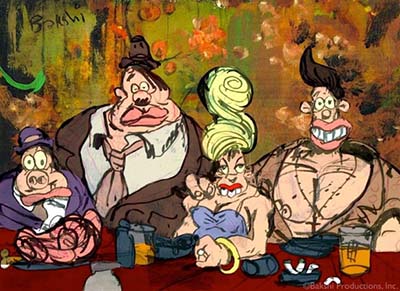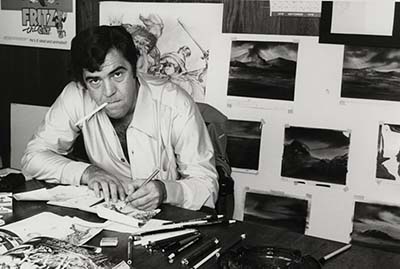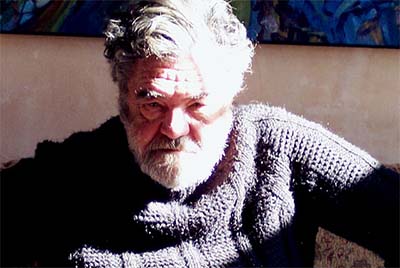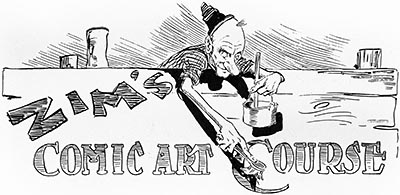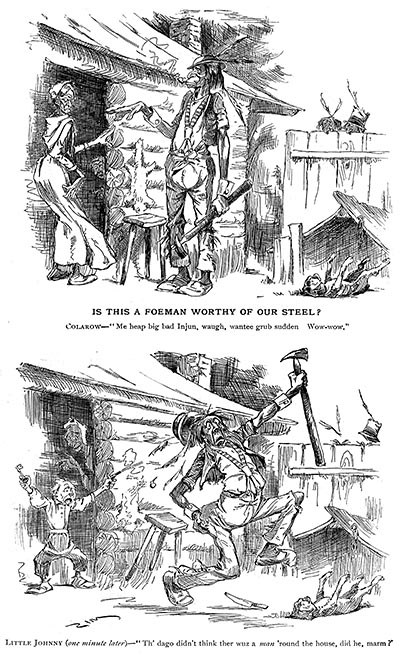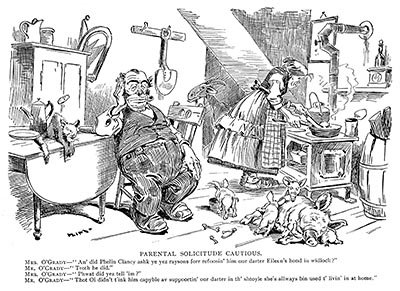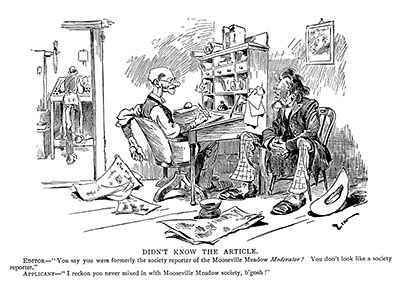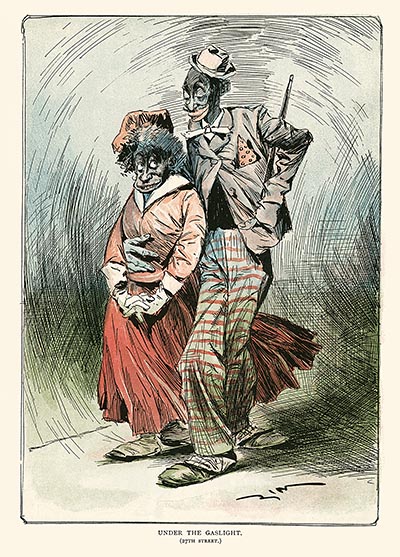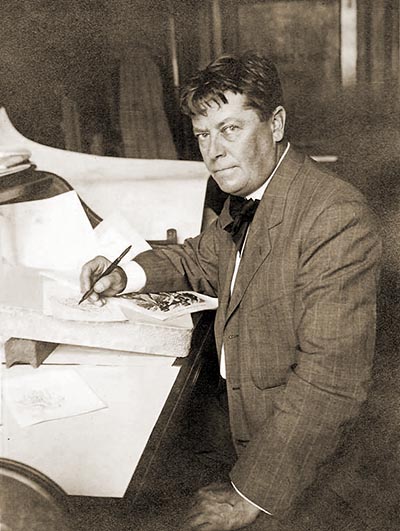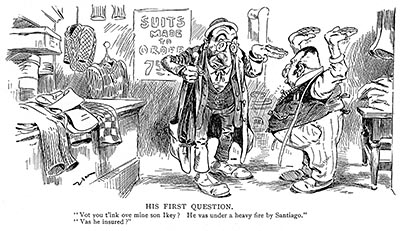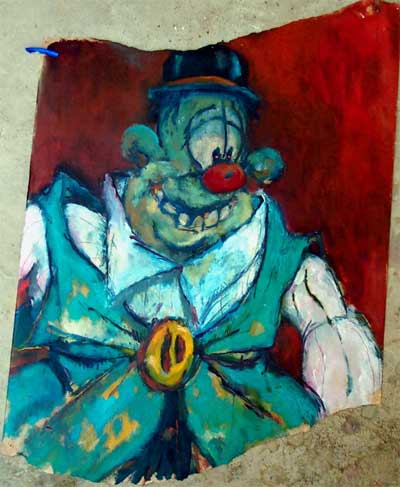
The paintings on this page are by Ralph Bakshi. (© Bakshi)
To see more of Ralph’s fine art, visit RalphBakshiart.com
Ralph Bakshi is one of my best friends. Ralph has retired to New Mexico to paint, but he is still very much in touch with the animation scene today. After a bit of cajoling, I’ve persuaded him to speak to the animation community on Animation Resources. In this article, Ralph gives his viewpoint on the history of animation and points the direction that he thinks animation should take in the future. Whether you draw animation with a pencil or use a computer, I think you’ll find his comments to be important and inspiring. -Stephen Worth
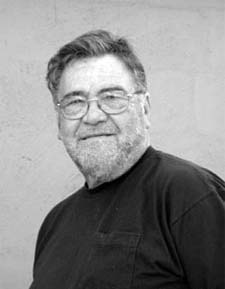
![]() BAKSHI SPEAKS TO CGI ANIMATORS
BAKSHI SPEAKS TO CGI ANIMATORS
Frame to frame animation eventually came to a grinding end. I’m not sure which generation of young animators were at Disney redoing and relearning the tradition of making boring films and recreating cliched motion when it expired. Except for Jim Tyer, “Modern Animation” and Ralph Bakshi, animation was dying- while doing the same old thing. Big money and animators never really followed Bakshi, “Modern Animation” or Jim Tyer. They just rehashed its past.
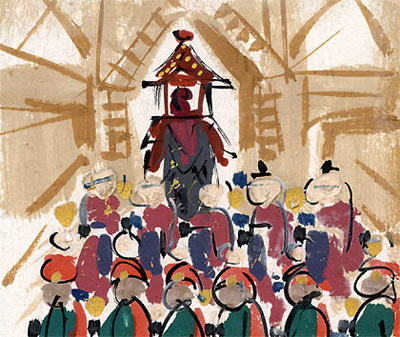
(Read Chuck Jones’ article on the failure of "Modern Animation")
UPA failed because it was nothing more than elitist designers trying to animate on museum walls. Content was unimportant to them, really. Matisse or Picasso were more important. Bakshi was hounded out of the business by controversy. And you’d be surprised how many animation directors at Terrytoons disliked Jim Tyer’s work because it didn’t look like Disney- or anything else for that matter. Terry kept him on because his weekly footage output was so large.
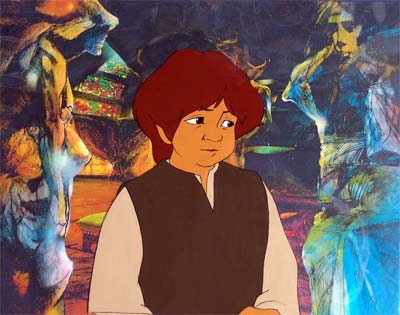
(See the gallery of images from Lord of the Rings on RalphBakshi.com)
Lord of the Rings was done in rotoscope animation because rotoscope made it physically possible to do it. You couldn’t do Lord of the Rings in less than 25 years using traditional animation. Thirty years later- Wow! Along comes the computer… “We can do Disney story animation with another look and sell it back to audiences.” Of course, I would have used computers and motion capture if they had been around during my day. But I turned to Tolkien to try to change the kinds of stories animation told. My city films were being thrown out of theaters.
So, what’s the argument here? Unless hand-drawn animation finds new creative story approaches and new creative drawn motion exaggerations, it will look as it always looked at the end- faded and drawn. There’ll be no great interest for it either. Computer animation has the exact same problem. Computer animation will eventually grow old, just like hand-drawn animation, unless something new happens. It will fall into manneristic boredom if it continues to endlessly redo what’s already been done before. The success and the money will always follow the creative artists who take either of these two mediums and do something different with it.
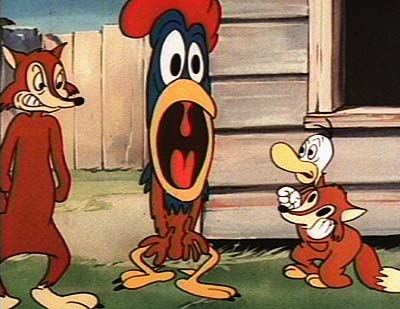
A lot of people remember and love Jim Tyer’s animation today because he really did something different with hand-drawn animation. He didn’t follow the crowd.
First of all, when it comes to controversy over 2D vs. 3D, I’m in no particular camp. I think computer animation is amazing. Some of the Japanese hand drawn animation I’ve seen is great too. But the discussion always comes down to the same one I always have with the young kids in the industry- the starving ones with mortgages to pay. When I see the end credits on big studio animated films, I’m floored by the amount of people it takes to finish a film. The cost to make the first 20 minutes of your modern animated feature would comprise the entire budgets of all of my first six films put together. Hard to believe but true!
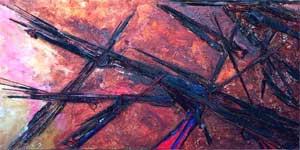
It’s probably inconceivable to you guys, but I made my feature films with no pencil tests, no storyboards, no retakes, no color keys, no character designers, no special effects department, nothing, zip, nada- because we had to. (How I did that is another discussion altogether.) I was my own animation director- everything came to me. I flipped the drawings and gave the OK. God bless the professionalism of Irv Spence, John Sparey, Ambi Paliwoda, Virgil Ross, Manny Perez… all those guys who animated for me, because they’re the ones that made it all come alive.
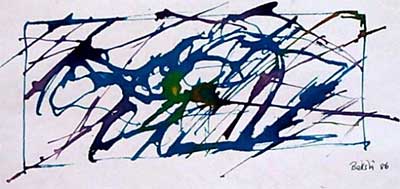
I’ll tell you a secret… Not having pencil tests was liberating for the animators who worked for me. They knew I was expecting creativity, not perfection. I wasn’t gonna be standing over the moviola looking at their tests saying, “raise that pinkie finger a little higher” or “fix that lip flap”. There was no room for retakes. Knowing that made them unafraid. No one was going to look over their shoulder and second guess them. They puzzled out the scene, expressed themselves through the character, and moved on to the next scene. You better believe- they loved it!
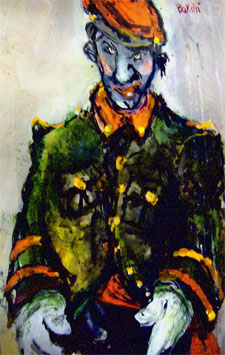
![]() When I was young, I had a dream- and a rage over Disney’s insistence that nothing worked on the big screen unless it was perfect- redone and reworked until it was flawless. I always thought the difference between my films and the Disney ones was the difference between rock n’ roll and a symphony. I love them both if the music is right. But a lot of spoiled animators claimed that I was ruining every young kid’s life with my rough animation- and that Terry-Toons and I were nothing. I didn’t listen to them, because I always felt that honesty, leaving the pack, telling stories that were part of the director’s personal life and not some merchandiser’s idea- all those things were more important than Disney’s insistence on perfect animation.
When I was young, I had a dream- and a rage over Disney’s insistence that nothing worked on the big screen unless it was perfect- redone and reworked until it was flawless. I always thought the difference between my films and the Disney ones was the difference between rock n’ roll and a symphony. I love them both if the music is right. But a lot of spoiled animators claimed that I was ruining every young kid’s life with my rough animation- and that Terry-Toons and I were nothing. I didn’t listen to them, because I always felt that honesty, leaving the pack, telling stories that were part of the director’s personal life and not some merchandiser’s idea- all those things were more important than Disney’s insistence on perfect animation.
OK. Let’s talk animation. First of all, I want to talk to you drawing type animators…
When I hear 2D animators today talking about acting in hand-drawn cartoons, I ask, what kind of acting? Are you talking about the old fashioned acting that animators have always done? You know… the hand on the hip, finger-pointing, broad action, lots of overlapping action, screeching to a halt- all that turn-of-the-century old fashioned mime stuff. Is that what you’re talking about? Well, forget about it. If you’re gonna compete with computer animation, you better go all out and do something that’s totally different. Call it “new acting”. Blow the computer out of the water. Sure, Milt Kahl, Irv Spence, Bill Tytla and all those guys were great. Leave them alone. They’ve done their job. It would just seem old to do the exact same thing today. Find something new to call your own- something exciting as hell.
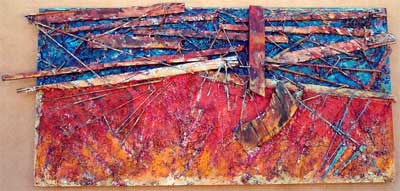
To you computer guys…
I’m supposed to scold you computer animators and tell you to think more like the hand drawn guys. Well, there’s no question hand drawn animation is different than CGI, motion capture or rotoscope, or even limited animation. Yes, computer animators CAN learn a lot from hand drawn if they know where to look. Maybe… maybe… maybe…
Some history- Early on, hand drawn was great- Fleischer’s Popeye, Jim Tyer, Freddie Moore, Rod Scribner, Bill Tytla, Johnny Gent… the direct, fresh stuff. But then suddenly, along came “real good animation” with all its complication, and the long painful looks, big shrugs and sighs, batting eyelashes, cutesy pie phony crap until you want to vomit… Overnight, all the old greats were forced to either kill themselves, stay drunk all the time, or quickly fade away. Animation got saddled with a bunch of boring, repetitive, old fashioned, dumb cliches. I am NOT going to tell computer animation to follow that road. Sure, computer animators should look at hand drawn animation to learn. But don’t get down on your knees. Don’t make the same mistakes hand drawn animation made at the end. Study the right stuff. There’s a hell of a lot more to learn from a Fleischer Popeye than there is from some “epic fantasy” like Prince of Egypt.
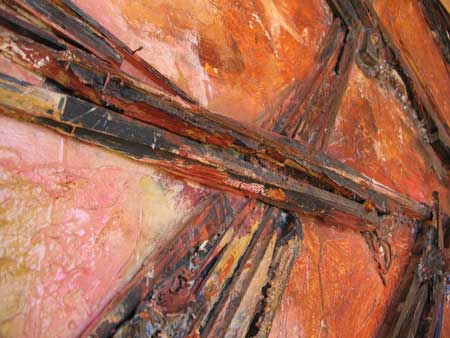
So I’m sitting in the theater watching a rat trying to cook some food. Now he’s trying to get out the window… I blink with amazement at the brilliance of your computer, but wait a minute… This is nothing more than a Disney film made with a computer! Your bosses must have MADE you do this. Where do you guys think you’re headed? Do you really think copying Disney films over and over isn’t going to get just as boring as the boring Disney films you’re copying? You’ve got all these great computers… show me something I haven’t seen a million times already. I have things in my head that the computer could do that would stun you. (But don’t worry. I got turned down by every studio in town.)
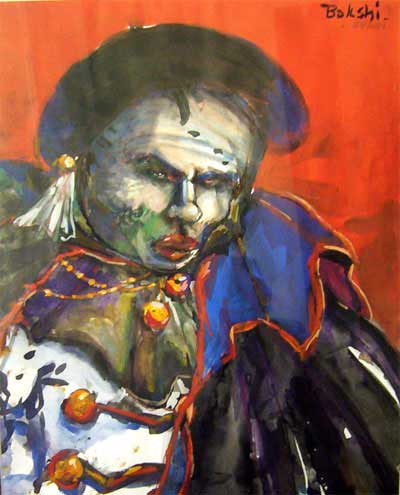
Listen. I’m talking to that bunch of you computer guys out there who want to crawl into a basement with a big stack of machines and kick ass- the guys who want to do something NEW and DIFFERENT. Don’t worry about the money. You’re not getting paid that much anyway. If your characters shake and spit the colors off in some scenes- great. It doesn’t matter. And if some of the textures jiggle a little, who cares? Back in the day, I heard animators critique the animation in my films as being “too ruff”. Well, we didn’t like it all either- but we LOVED what we were making- Fritz the Cat, Heavy Traffic, Coonskin, Hey Good Lookin’, Wizards- thirty years later and they’re still playing worldwide, because they were honest and rugged. The animation didn’t take away from the movie like the slick stuff I see in hand drawn animation at the end. Something REAL is always better than something realistic.
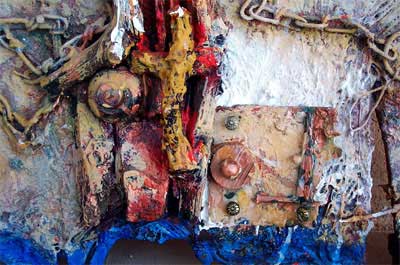
There are no sides here, only techniques. The important thing is to do something more than just sell dolls and hamburgers, or get the best table at some bullshit restaurant. Stop crying. Go out and do something. Starve to death if you have to. It’s honorable.
Go buy my book. Read more. Learn more. Get mad at me again.
Old Man Ralph
© Bakshi Productions
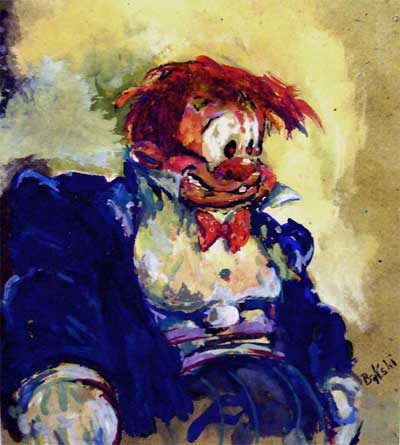
Several years ago at the San Diego Comic-Con, I had the honor of hosting an interview with Ralph Bakshi. He had some important things to say to the animators in the crowd. Watch Ralph take my question and hit it out of the park…
Many thanks to the Bakshi family for their helpfulness and generosity, and to our fantastic videographer, JD Mata.
Feel free to embed the YouTube on your own website. Spread the word! Educators may download a higher resolution copy of this video to burn to DVD for viewing in their classroom.
Read the comments about this video at YouTube, Cartoon Brew, CGI Society Part One, CGI Society Part Two, Animation Nation and Weirdo’s blog on Newgrounds.
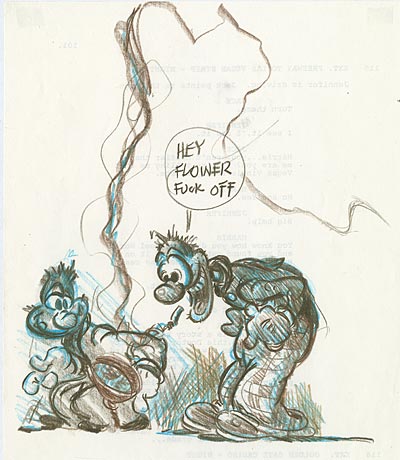
Visit Ralph’s web page… RalphBakshi.com.

UNFILTERED: The Complete Ralph Bakshi
isn’t one of those "art books" with postage stamp sized pictures floating in oceans of tasteful white space and huge text blocks of scholarly blather that crowds out the images. It’s just pictures, pictures and more pictures… along with just enough text to put them in context. The book is organized to show Ralph’s career from his earliest days at Terry-Toons, to his groundbreaking features, to his revolutionary TV work, to his most recent fine art paintings. Even if you think you know all there is to know about Bakshi, this book will grab you by the lapels and shake you and show you things you’ve never seen the likes of before. Click through the link to pick up the Bakshi book at Amazon.
Stephen Worth
Director
Animation Resources
This posting is part of the online Encyclopedia of Cartooning under the subject heading, Animation.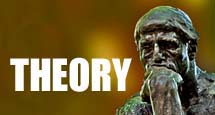
![]()
This posting is part of a series of articles comprising an online exhibit entitled Theory.
















